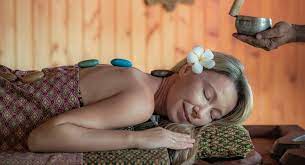Diseases

AyurDETOX Therapy/ Panchakarma Therapy
Panchakarma therapy is a specialized Ayurvedic detoxification and rejuvenation treatment that aims to eliminate toxins from the body, restore balance, and promote overall well-being. It is a comprehensive therapy that involves a series of procedures and therapies tailored to an individual's unique needs. Panchakarma translates to "five actions" in Sanskrit, referring to the five main procedures involved in the therapy. Here's an overview of the five main procedures of Panchakarma:
1. Vamana (Therapeutic Emesis): Vamana involves the therapeutic induction of controlled vomiting to eliminate excess doshas (energetic principles) and toxins from the upper gastrointestinal tract. It is primarily used to address conditions related to Kapha dosha, such as respiratory disorders, allergies, and skin diseases.
2. Virechana (Therapeutic Purgation): Virechana is the administration of herbal laxatives to facilitate controlled bowel movements and cleanse the digestive tract. It targets Pitta dosha and is often recommended for liver disorders, skin conditions, digestive issues, and certain metabolic disorders.
3. Basti (Medicated Enema): Basti involves the introduction of herbal oils, decoctions, or medicated substances into the rectum. It is primarily used to balance Vata dosha and is beneficial for conditions such as constipation, chronic pain, neurological disorders, and reproductive health issues.
4. Nasya (Nasal Administration): Nasya involves the administration of herbal oils, powders, or medicated substances through the nasal passages. It is used to treat conditions affecting the head, neck, and respiratory system, as well as to promote mental clarity and balance.
5. Raktamokshana (Bloodletting): Raktamokshana is the process of controlled removal of a small amount of blood from specific areas of the body. It is typically used to alleviate conditions related to impure blood, such as skin disorders, joint pain, and certain circulatory disorders. This procedure is less commonly performed and is not a part of every Panchakarma treatment.
The selection and sequence of these procedures in Panchakarma therapy are determined by an Ayurvedic practitioner based on an individual's constitution (dosha), specific health condition, and requirements. Panchakarma therapy is typically preceded by preparatory procedures, such as oleation (external and internal oil application) and sudation (sweating therapies), to facilitate the release of toxins from the tissues.
Panchakarma therapy is considered a comprehensive healing modality that helps balance the doshas, eliminate toxins, strengthen the body's natural healing abilities, and restore overall health and well-being.
